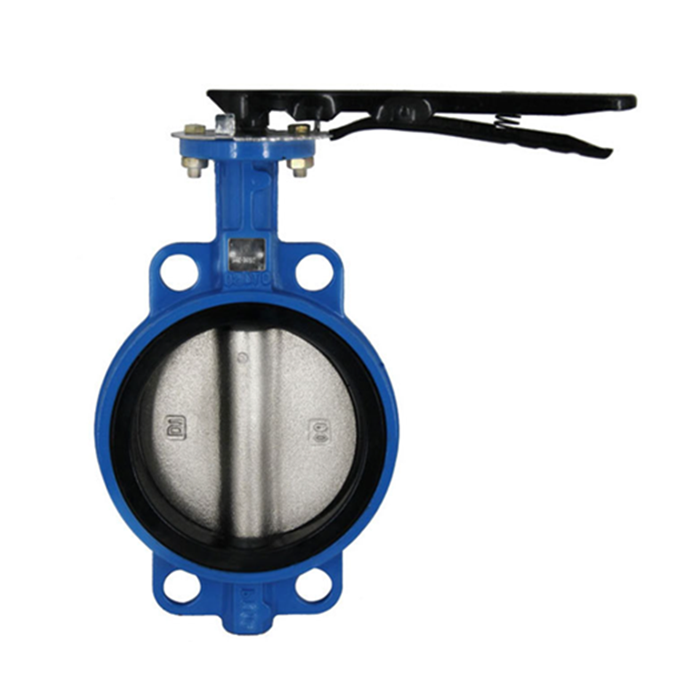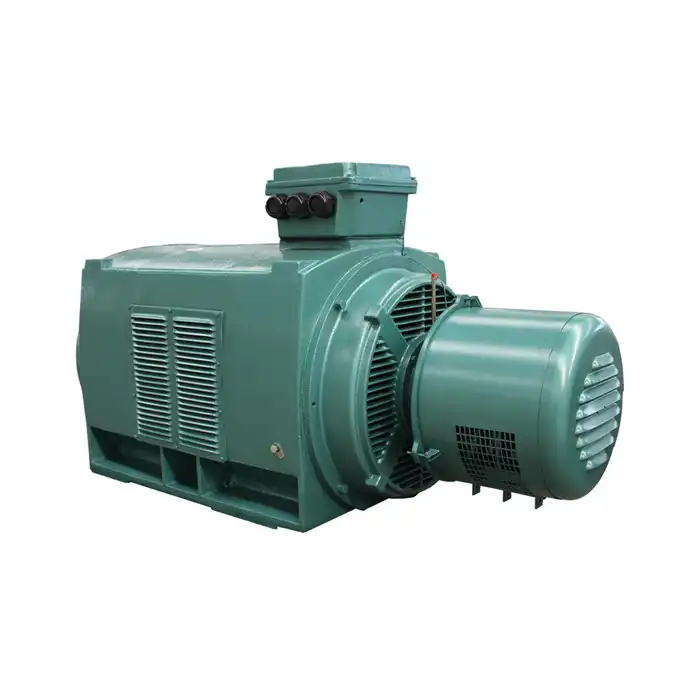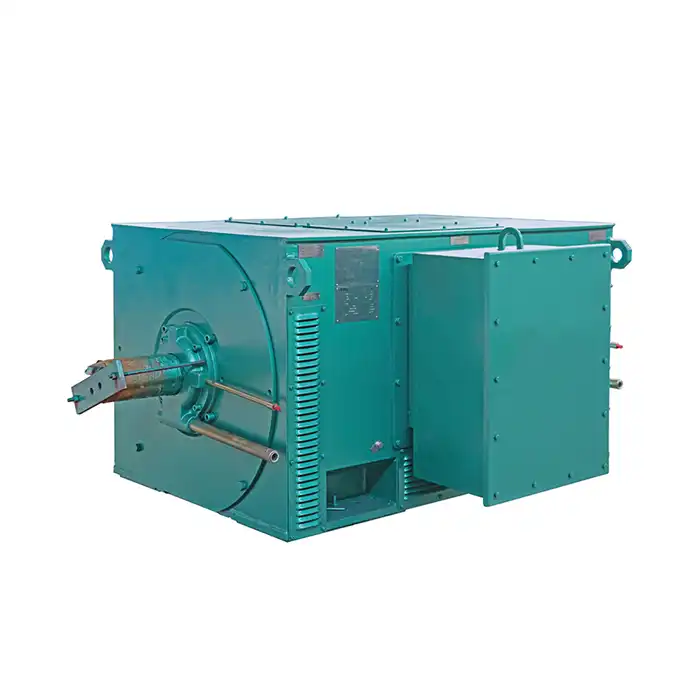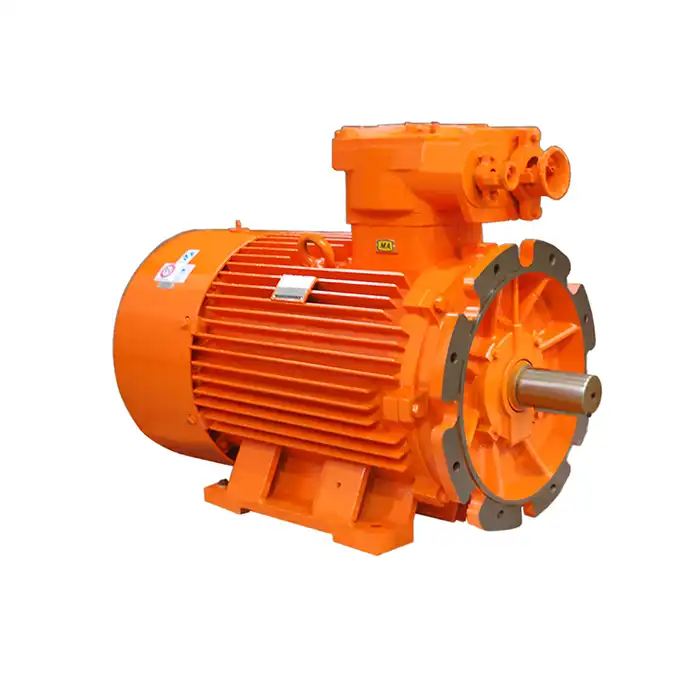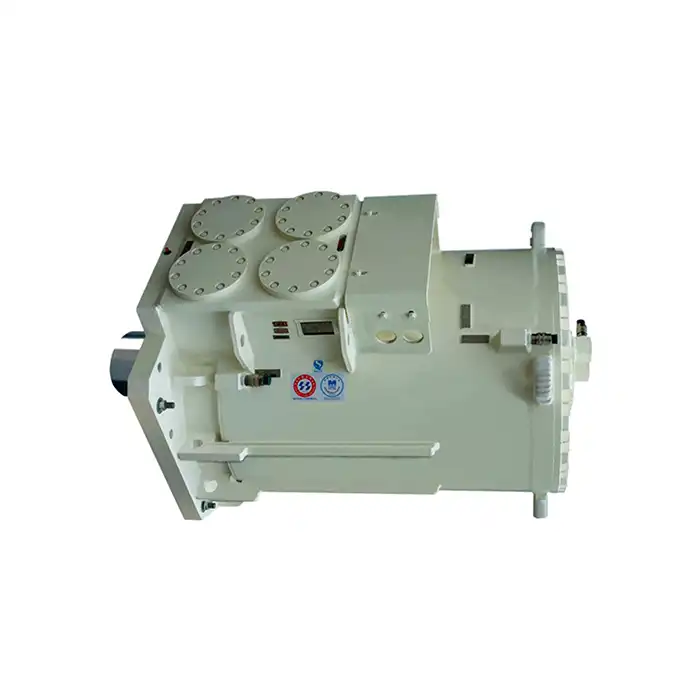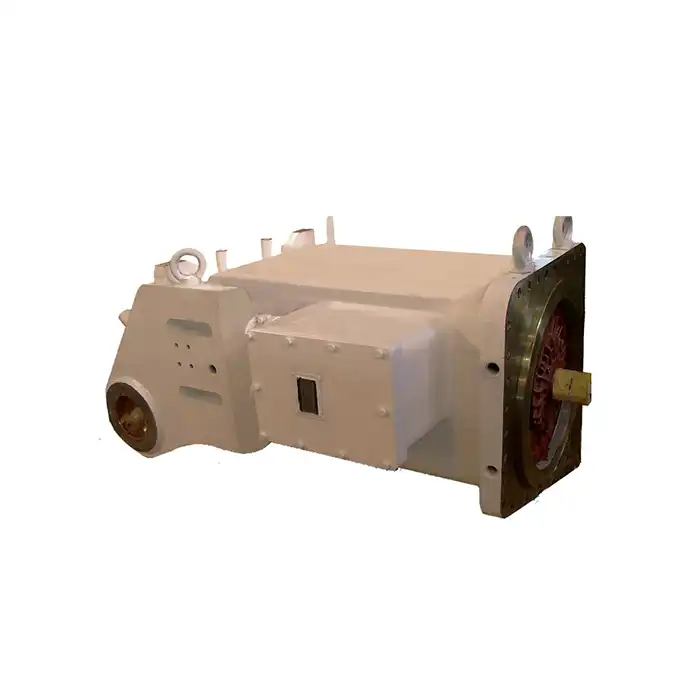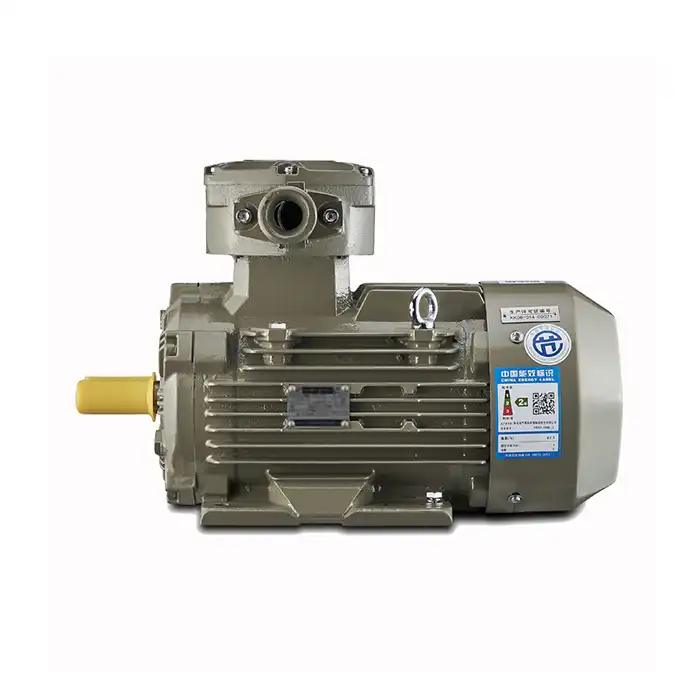Harsh Environment Challenges for Motor Performance
Harsh environments present numerous obstacles that can significantly impact the performance and lifespan of medium voltage motors. Understanding these challenges is crucial for implementing effective maintenance strategies.
Extreme Temperature Fluctuations
One of the most common challenges faced by medium voltage induction motors in harsh environments is extreme temperature fluctuations. These can lead to thermal stress on motor components, causing premature wear and potential failure.
Moisture and Humidity
High humidity levels and exposure to moisture can lead to corrosion of motor parts, electrical insulation breakdown, and reduced motor efficiency. In coastal or tropical environments, this problem is particularly prevalent.
Dust and Particulate Matter
In environments with high levels of dust or particulate matter, such as mining or construction sites, motors can suffer from clogged ventilation systems and accelerated wear on moving parts.
Corrosive Atmospheres
Chemical plants, offshore platforms, and other industrial settings may expose motors to corrosive atmospheres, leading to rapid deterioration of motor components if not properly protected.
Vibration and Mechanical Stress
Continuous exposure to vibration and mechanical stress can lead to misalignment, bearing wear, and structural damage to the motor over time.
Protective Measures: Shielding Motors from Elements
To ensure the longevity and reliability of medium voltage induction motors in harsh environments, implementing robust protective measures is essential. These strategies help shield motors from the damaging effects of extreme conditions.
Enclosure Selection and Customization
Choosing the right enclosure for your medium voltage motor is crucial in harsh environments. IP (Ingress Protection) ratings indicate the level of protection against solid objects and liquids. For example, an IP66 rating provides protection against dust and powerful water jets.
In some cases, custom enclosures may be necessary to address specific environmental challenges. Working with a reputable medium voltage induction motor supplier can help in selecting or designing the most appropriate enclosure for your application.
Cooling System Optimization
Effective cooling is vital for motor performance and longevity, especially in high-temperature environments. Consider the following cooling strategies:
- Forced air cooling systems with filters to prevent dust ingress
- Liquid cooling systems for extreme temperature environments
- Heat exchangers to maintain optimal internal motor temperature
Insulation and Winding Protection
Enhancing insulation and winding protection is crucial for motors operating in humid or corrosive environments. Consider these measures:
- Using higher-grade insulation materials
- Applying protective coatings to windings
- Implementing vacuum pressure impregnation (VPI) for better insulation
Corrosion-Resistant Materials and Coatings
For motors exposed to corrosive atmospheres, utilizing corrosion-resistant materials and protective coatings can significantly extend their lifespan. Options include:
- Stainless steel components for critical parts
- Epoxy-based coatings for external surfaces
- Zinc-rich primers for enhanced corrosion resistance
Vibration Isolation and Dampening
To mitigate the effects of vibration and mechanical stress, consider implementing:
- Flexible couplings to reduce transmitted vibration
- Vibration dampeners or isolation mounts
- Regular alignment checks and adjustments
Maintenance Schedule: Adapting to Extreme Conditions
A well-planned maintenance schedule is crucial for ensuring the longevity and reliability of medium voltage induction motors in harsh environments. Adapting your maintenance routine to account for extreme conditions can prevent unexpected downtime and extend motor life.
Frequent Inspections and Monitoring
Regular inspections are the foundation of an effective maintenance program. In harsh environments, increase the frequency of these checks:
- Visual inspections for signs of wear, corrosion, or damage
- Thermal imaging to detect hot spots or insulation breakdown
- Vibration analysis to identify potential mechanical issues
- Oil analysis for motors with oil-lubricated bearings
Consider implementing continuous monitoring systems for critical motors, allowing for real-time data collection and early problem detection.
Cleaning and Lubrication Protocols
Develop and adhere to strict cleaning and lubrication protocols tailored to your specific environment:
- Regular cleaning of motor exterior and ventilation systems
- Use of appropriate cleaning agents that won't damage motor components
- Proper lubrication schedules using lubricants suitable for the operating conditions
- Monitoring and maintaining proper lubricant levels
Electrical Testing and Diagnostics
Regularly scheduled electrical testing can help identify potential issues before they lead to failure:
- Insulation resistance testing
- Winding resistance measurements
- Partial discharge testing for early detection of insulation deterioration
- Motor current signature analysis (MCSA) for detecting electrical and mechanical faults
Preventive Component Replacement
In harsh environments, certain motor components may require more frequent replacement. Develop a schedule for preventive replacement of critical parts such as:
- Bearings
- Seals and gaskets
- Cooling fan blades
- Terminal box components
Environmental Adaptation Strategies
As conditions change, be prepared to adapt your maintenance strategies:
- Seasonal adjustments to maintenance schedules
- Modifying protective measures based on changing environmental factors
- Updating maintenance procedures as new technologies or best practices emerge
Documentation and Record-Keeping
Maintain detailed records of all maintenance activities, inspections, and repairs. This information can help identify trends, optimize maintenance schedules, and inform future equipment decisions.
Staff Training and Safety Protocols
Ensure that maintenance staff are properly trained in handling medium voltage induction motors in harsh environments. Develop and enforce safety protocols specific to your operating conditions.
Conclusion
Maintaining medium voltage induction motors in harsh environments requires a comprehensive approach that combines protective measures, regular maintenance, and adaptive strategies. By implementing these practices, industries can significantly extend the life of their motors, reduce downtime, and ensure optimal performance even in the most challenging conditions.
Regular collaboration with your medium voltage induction motor supplier can provide valuable insights and support in developing and refining your maintenance strategies. Their expertise can help you stay ahead of potential issues and implement the most effective solutions for your specific environmental challenges.
Partner with XCMOTOR for Reliable Medium Voltage Solutions
When it comes to medium voltage induction motors, XCMOTOR is your go-to source for dependable power that can endure the worst circumstances. To make sure your industrial applications last as long as possible and run as efficiently as possible, our team of specialists can tailor solutions to your exact requirements.
With our extensive experience and commitment to quality, we offer:
- Custom-designed motors for extreme environments
- Comprehensive maintenance support and training
- Ongoing technical consultation for optimal motor performance
Don't let harsh environments compromise your operations. Contact XCMOTOR today at xcmotors@163.com to discuss how we can help you maintain and optimize your medium voltage induction motors for long-term success.




